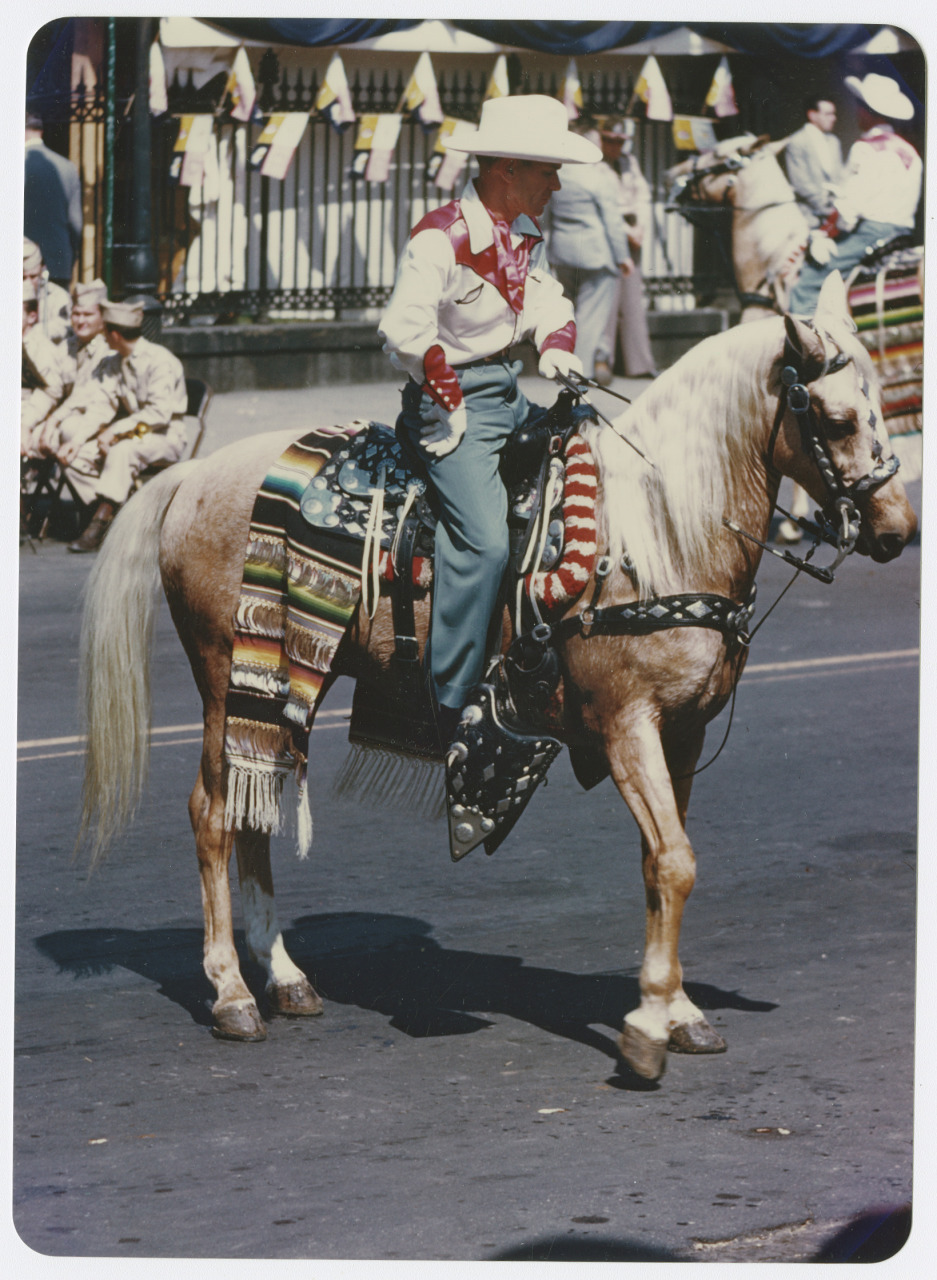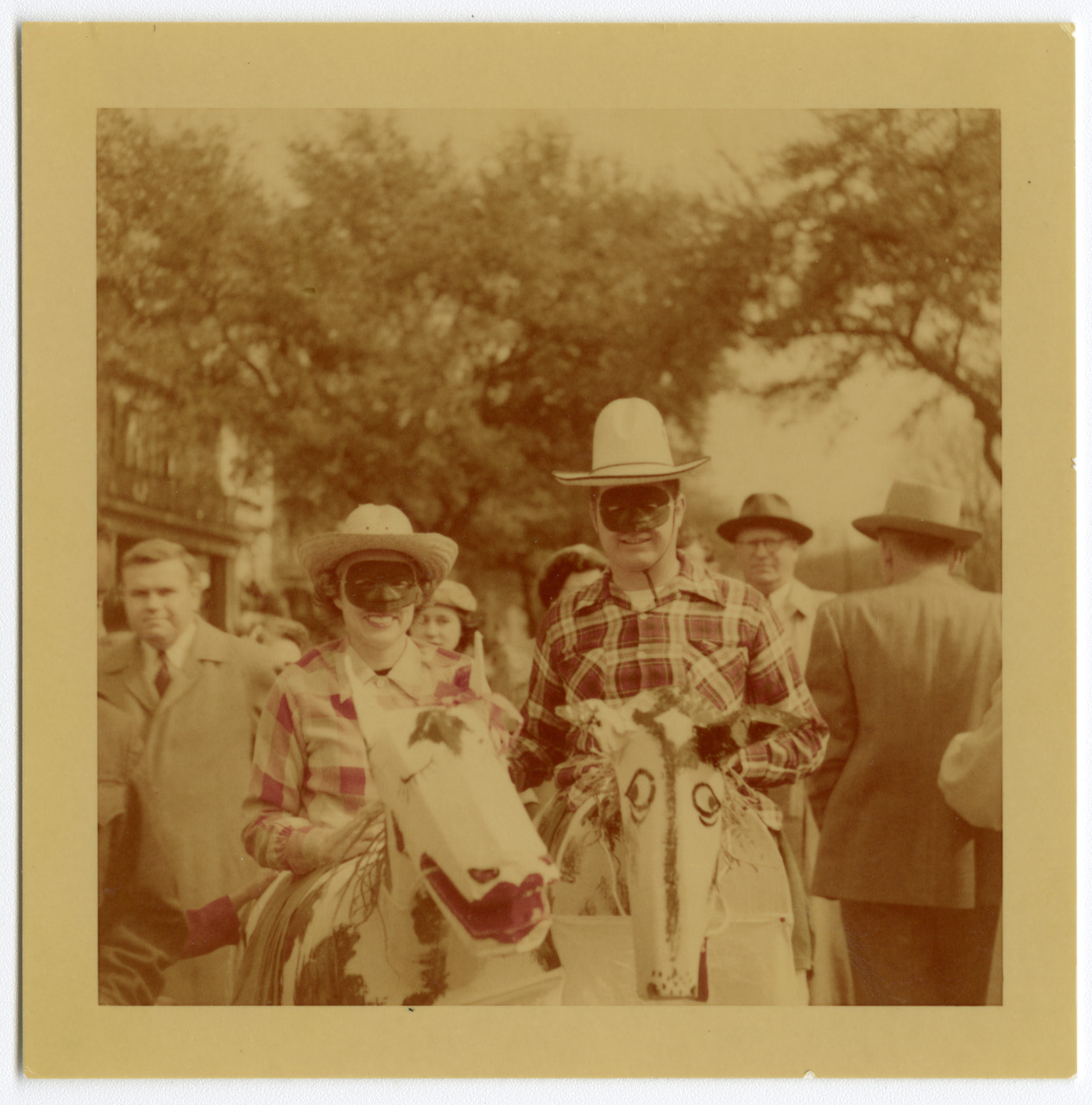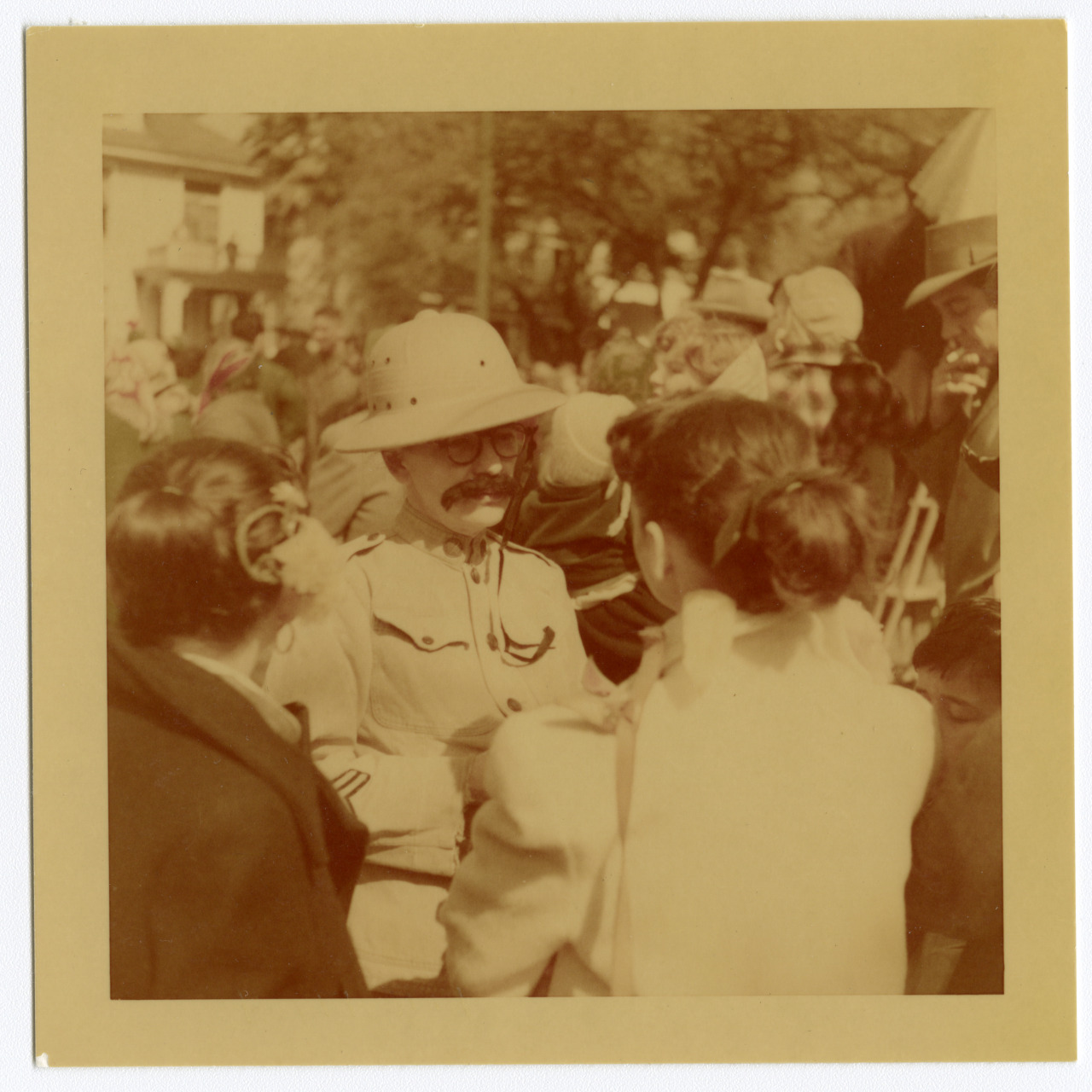Kodacolor, the first color negative film introduced by Kodak, was manufactured from 1942 to 1963. Processing of the film was originally included in the price of the film, but prints had to be ordered separately.
Image stability—a print’s ability to retain its color and balance over time—has been a major shortcoming of chromogenic prints on paper; stability is particularly problematic with the negative-to-positive Kodacolor process introduced in the 1940s. Many of these prints exhibit dye fading and coupler staining, evident by yellow stains wherever magenta dye (one of the three dye layers) has faded. This is especially noticeable in highlight areas and the print’s borders, which would otherwise appear white.

Eisenhower parade, Decatur Street
chromogenic Kodachrome print; 1953
by Benjamin W. Yancey
The Historic New Orleans Collection, gift of Mr. and Mrs. Benjamin W. Yancey, 1982.193.5

Mardi Gras Day
chromogenic Kodacolor print; 1953
by Benjamin W. Yancey
The Historic New Orleans Collection, gift of Mr. and Mrs. Benjamin W. Yancey, 1976.179.2

Mardi Gras Day
chromogenic Kodacolor print; 1953
by Benjamin W. Yancey
The Historic New Orleans Collection, gift of Mr. and Mrs. Benjamin W. Yancey, 1976.179.4
